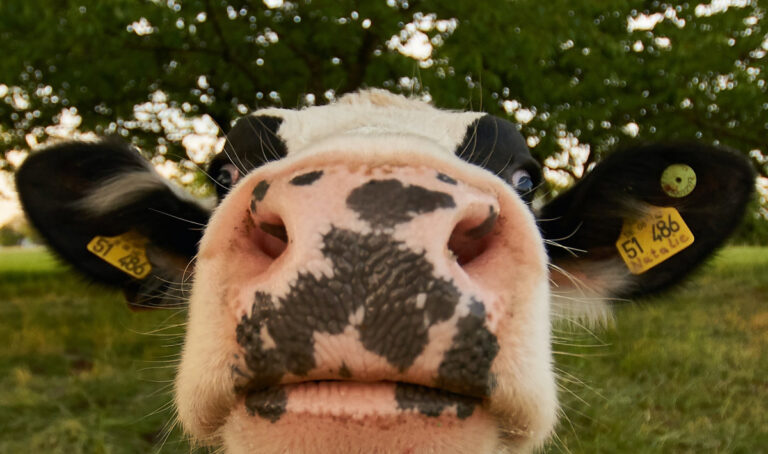Forget farts, cows might actually be burping the planet into an early grave

Though the debate around methane production as a result of mass animal agricultural farming has been largely credited to great volumes of cow flatulence, it seems the main culprit is coming out the other end. For the first time in history, researchers have been able to actually measure the rates of cow burps from space and evaluate their contribution to global warming and it’s—you guessed it—quite dire.
The burps of California cows in San Joaquin Valley were measured while guzzling down their typical feed and recorded via satellite imagery for the first time, forming a clear visual of the impact of the industry on the planet. The methane emissions were discovered by GHGSat’s—an environmental data company—high-resolution satellites in February and disclosed this week as part of its news release.
According to the global emissions monitoring company’s satellite, methane expulsion from just the specific feedlot in California ranged between 443 kilograms (977 pounds) to 668 kilograms (1470 pounds) per hour on 2 February 2022. Following the data collected, GHGSat suggested that if such emissions continued uninterruptedly for a full year, the released gas from the lot would be enough to actually power 15,402 homes.
Such findings were not as easy to discover previously—due to the challenge of measuring flatulence, as it dissipates quite easily by the wind. However, due to advancements in technology, this has been made more feasible. “This has not been done at an individual facility scale for the agriculture sector, as far as we know,” Brody Wight, a GHGSat sales director, said in the news release. “The idea is that we need to measure first before you can take real positive action.”
Wight additionally told CNN that the company’s satellites fly over an appointed region for a brief 20 seconds, in which it is able to capture a rapid “snapshot” of the emissions. This could mean that, in the future, a “temporal picture” can be formed of the rate of methane—whereby changes (such as the impact of different diets) can be monitored.
The advancements made by the company have aided in exposing the real culprit of methane emissions, it’s not farts—as first thought—but burps. According to GHGSat, digestive flatulence only accounts for a small amount of methane production via cattle (about 5 per cent), the majority 95 per cent is made up of both belching and expulsion through the nose.
According to NASA, this is known as enteric fermentation, a digestive process whereby sugars consumed are converted into molecules to be absorbed—methane being created as a byproduct of this development.
This latest research is a progressive step in highlighting the specific causes of environmental impact and can better aid the creation of necessary solutions. A focus on discovering the root of methane production is imperative since it has been reported to have 80 times the warming power of carbon dioxide in the first 20 years it reaches the atmosphere. Although carbon dioxide undoubtedly has a longer impact, the short-term repercussions of methane warming cannot be ignored.
Though there has been contradicting evidence for which is the largest producer of methane—agriculture or the energy sector—the contribution of cattle to the entire ordeal cannot be left out of the loop. The very fact that there have been reports their methane emission is higher than oil and gas is worrying enough. Hoping its findings can aid the road to finding bigger solutions, GHGSat aims to step up the amount of satellite analysis it carries out—moving from once a week to daily scans, Wight noted in his statement. The company hopes to have a fleet of ten satellites by 2023.




